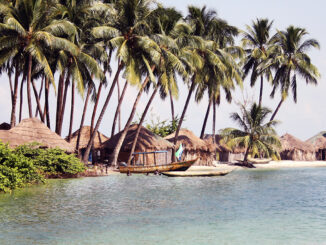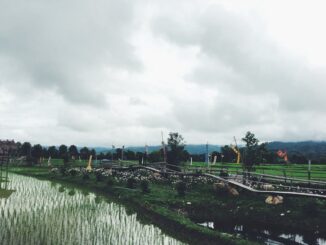
In the fourteenth and fifteenth centuries, the Spanish and the Portuguese tried to control the overseas trade of the colonies using monopolies. This control became very expensive for the governments and was incredibly inefficient. The Atlantic trading system became more efficient and profitable with capitalism. Capitalism is the economic system of large financial institutions such as banks, stock exchanges, and investment companies. This was only able to happen with the development of private enterprises. Capitalism was first developed in Europe and only expanded to the colonies of the New World when economic growth slowed in Europe.
Capitalism in these times was reinforced by mercantilism. Mercantilism was the policies of European governments designed to promote overseas trade between the countries and their colonies. These policies were created and put into effect using armed forces if needed to acquire precious metals from the colonies and requiring the colonies to only trade with their own countries. These policies encouraged private investors to buy shares in government chartered companies. Fierce competitions arose between each nations own people from the high tariffs and strict restrictions to foreigners.
As the Atlantic system developed, the increased demand for sugar in Europe was associated with increased slave trade from Africa to the New World. The Atlantic circuit also stimulated African slave trade. The Atlantic circuit kept goods moving from areas where they were abundant and cheap to areas where they were scarce and valuable. Some colonies participated in a “Triangular Trade” while others traded two ways. The most common goods were slaves from Africa, Tobacco and liquor from Brazil, Canadian furs, and guns and precious metals from Europe. Really the only goods that were abundant in Africa were the slaves which were commonly prisoners of war. After about 150 years, the number of slaves that were shipped out of Africa rose from nearly 800,000 to more than 7.5 million.
Economic life in Africa was affected greatly by the increase in demand for slaves as the Atlantic trade system was emerging. As the demand for slaves rose, the price to purchase them in Africa rose as well. In some places, the price for a slave tripled or nearly quadrupled. The African merchants were very demanding in what goods were acceptable in trading for slaves, and because the slave dealers in Africa had the advantage of “greed vs. need” (the foreigners needed the slaves more than the African merchants needed any of their goods), they set the prices high. The slaves were the biggest product of Africa along with the gold, ivory, and forestry products that were also traded.
Unless otherwise stated, PONIREVO and/or its licensors DO NOT own any intellectual property rights in the website and material on the website. Majority of the site’s content has been scraped and auto posted by a third party artificial intelligence program —– PONIREVO Creation Team.
Proudly WWW.PONIREVO.COM



